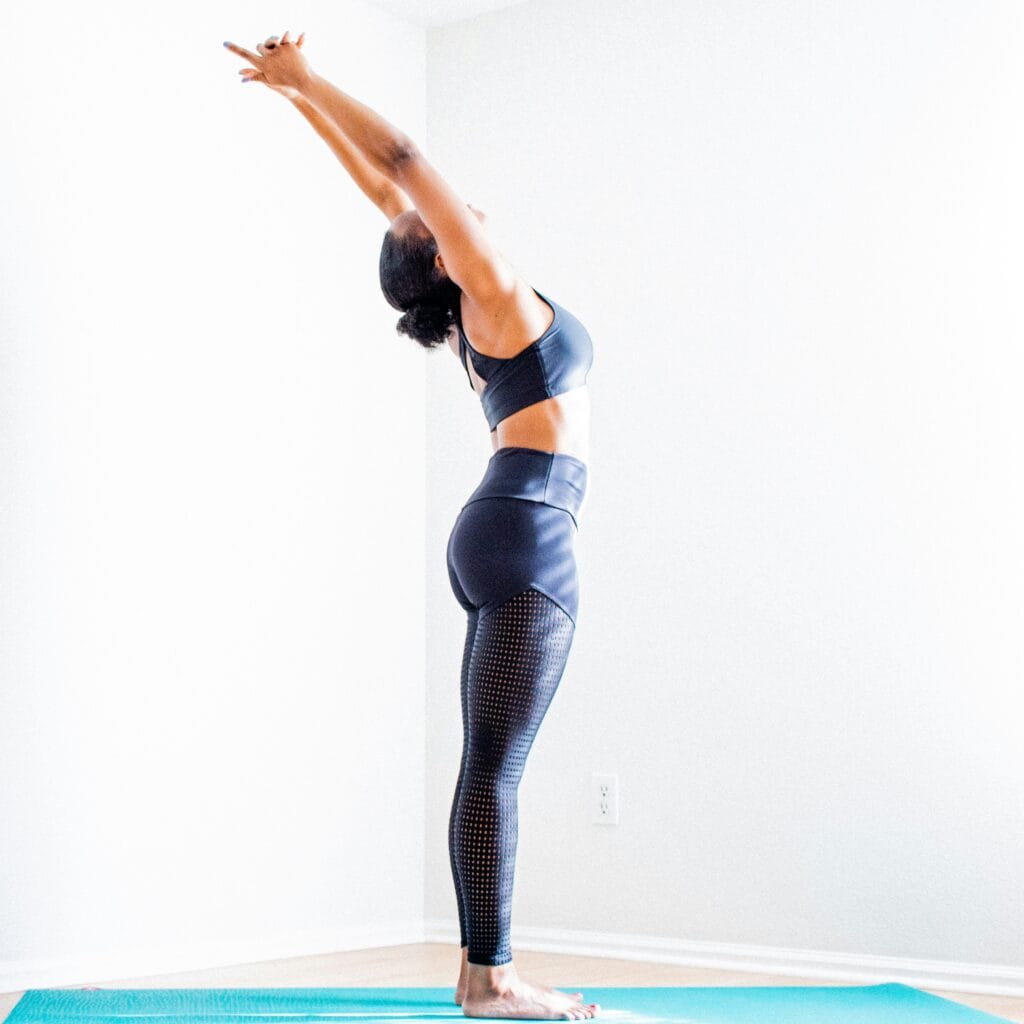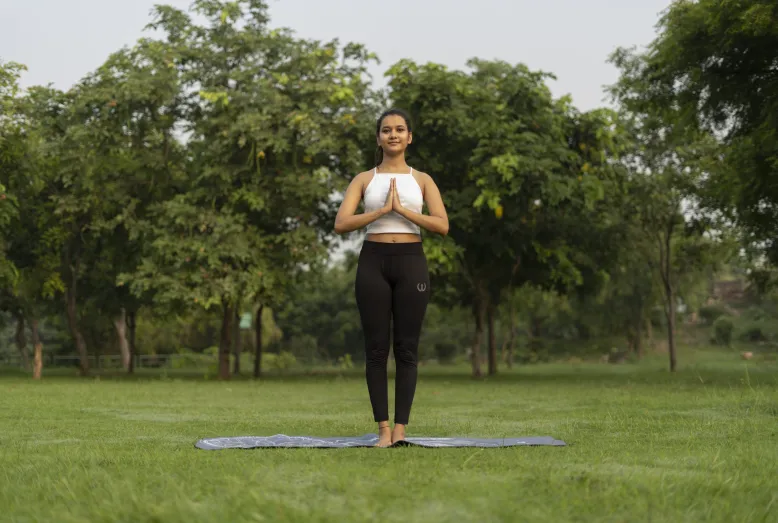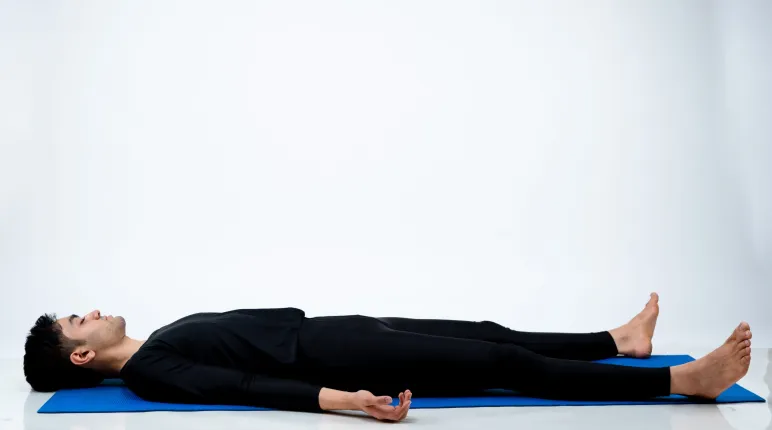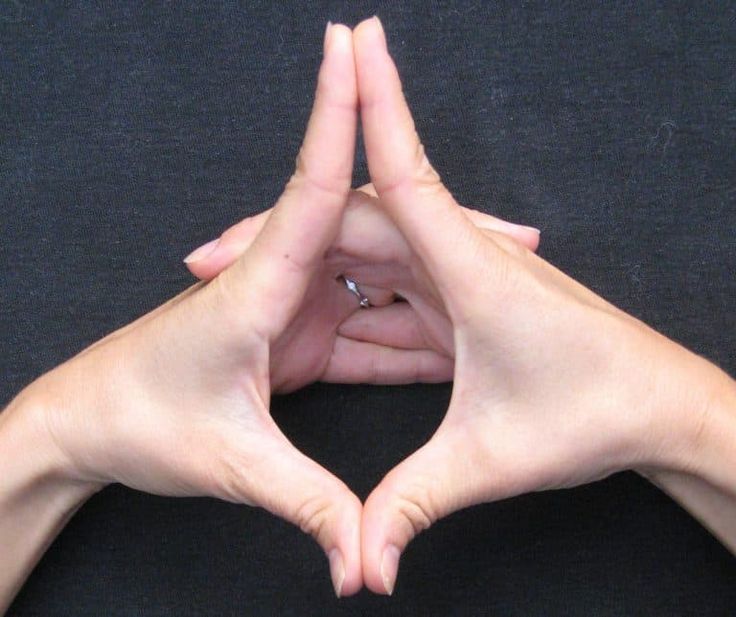Tadasana, commonly known as Mountain practice, is a basic yoga practice that has several physical and mental advantages.
This standing posture may appear simple at first, but its consequences are deep and far-reaching.
In this detailed tutorial, we will look at the different advantages of Tadasana, including how it may improve physical strength, mental clarity, and general health.
Table of Contents
TogglePhysical Benefits Of Tadasana :

1.1. Postural Alignment: Tadasana is a key position for developing posture by aligning the spine, shoulders, and hips. Regular practice helps to rectify postural abnormalities caused by slouching or prolonged sitting.
1.2. Core Strength: Practicing Tadasana strengthens the abdominal muscles, improving stability and balance.This can help to reduce lower back discomfort while also improving overall functional mobility.
1.3. Muscular Endurance: The posture needs activation of many muscular groups, such as quadriceps, hamstrings, and glutes. Over time, this improves muscle endurance and physical resilience.
1.4. Joint Stability: Tadasana helps stabilize the ankles, knees, and hips, lowering the risk of injury during physical exercises and daily motions.
1.5. Better Circulation: Tadasana promotes correct muscular alignment and engagement, which improves blood flow throughout the body and enhances tissue oxygenation.
Mental Benefits Of Tadasana:

2.1. Mental Clarity: Tadasana requires a continuous focus that develops mental clarity and concentration, which helps to calm the mind and reduce tension.
2.2. tension Reduction: Tadasana is a useful technique for reducing tension and anxiety since it may bring about a state of peace and relaxation.
2.3. Mind-Body Connection: Through the practice of breathing in tandem with movement in Tadasana, practitioners cultivate a sense of inner balance and harmony as well as a greater awareness of the mind-body connection.
2.4. Enhanced Energy: Tadasana’s gentle stretching and grounding properties invigorate the body and mind, giving practitioners a sense of renewed vigor and energy.
2.5. Improved Focus: Tadasana practice regularly enhances mental focus and concentration, which can lead to higher output and better performance on daily chores.
Positive Energy Effects:
3.1. Chakra Alignment: Tadasana corresponds to the Muladhara (Root) Chakra, which is in charge of emotions of stability, groundedness, and security.
This position provides a sense of stability and rootedness by balancing and activating the Root Chakra.
3.2. Pranic passage: Tadasana’s upright position promotes vigor and well-being by facilitating the smooth passage of prana, or life force energy, throughout the body.
3.3. Harmonizing Energy: Tadasana promotes general vitality and health by bringing the practitioner’s physical body and energy systems into alignment.
This provides a sense of balance and harmony within the practitioner.
Therapeutic Advantages:

4.1. Relieving Chronic Back Pain: By strengthening the back and abdominal muscles, Tadasana relieves stress and back pain.
4.2. Sciatica Relief: By releasing tension in the hips and lower back, Tadasana’s mild spinal stretching can help ease the symptoms of sciatica.
4.3. Better Posture: Regular Tadasana practice helps address postural imbalances and ease the pain that comes with bad posture, including shoulder and neck stiffness.
4.4. Stress Management: Tadasana is a useful tool for treating stress-related illnesses like migraines, sleeplessness, and digestive problems because of its relaxing properties.
4.5. Reduction of Anxiety: Tadasana’s attentive attention and deep breathing methods serve to soothe the nervous system, which in turn reduces anxiety symptoms and fosters a sense of wellbeing.
Conclusion
Tadasana, also known as Mountain Pose, has several physical and mental advantages.
This basic yoga pose is essential for general health and vitality, as it improves posture and physical strength while also promoting mental clarity and emotional well-being.
By including Tadasana into a daily yoga practice, practitioners can experience significant alterations that go well beyond the physical realm, building a stronger connection to oneself and a better sense of inner calm and balance.
Frequently Asked Questions ?
Tadasana, or Mountain Pose, improves posture, relieves back and sciatic pain, promotes relaxation, reduces stress, and calms the nervous system.
It boosts mood, stimulates digestion, and increases energy levels. However, it should not replace medical treatment and should be consulted with a healthcare professional.
Tadasana, also known as Mountain Pose, is a yoga practice that improves posture, elongates the spine, and creates alignment.
While it doesn’t directly increase height in adults, it indirectly creates an illusion of height by aligning the spine, shoulders, and hips.
Maintaining proper posture can prevent spinal compression and promote overall well-being.
Despite its potential, incorporating Tadasana into regular yoga practice can offer numerous benefits, including improved posture, flexibility, and overall well-being.
Tadasana, a yoga pose, is beneficial for physical and mental health but can also cause strain, injury, and discomfort.
Proper form and alignment are crucial to avoid muscle fatigue and discomfort. Overexertion or improper alignment can increase injury risk.
Practice mindfully and with a well-rounded approach to avoid imbalances in strength, flexibility, and mobility. Consult a healthcare professional or experienced yoga instructor for a safe and enjoyable experience.
Tadasana, a popular yoga posture, is generally safe for most individuals.
However, it may be advisable to avoid or modify the practice in certain situations, such as those with recent injuries, severe joint pain, pregnancy, high blood pressure, vertigo, spinal disorders, recent surgery, or chronic pain.
The pose should be practiced cautiously to avoid excessive strain on joints, and pregnant individuals may need to widen their stance.





No Comments